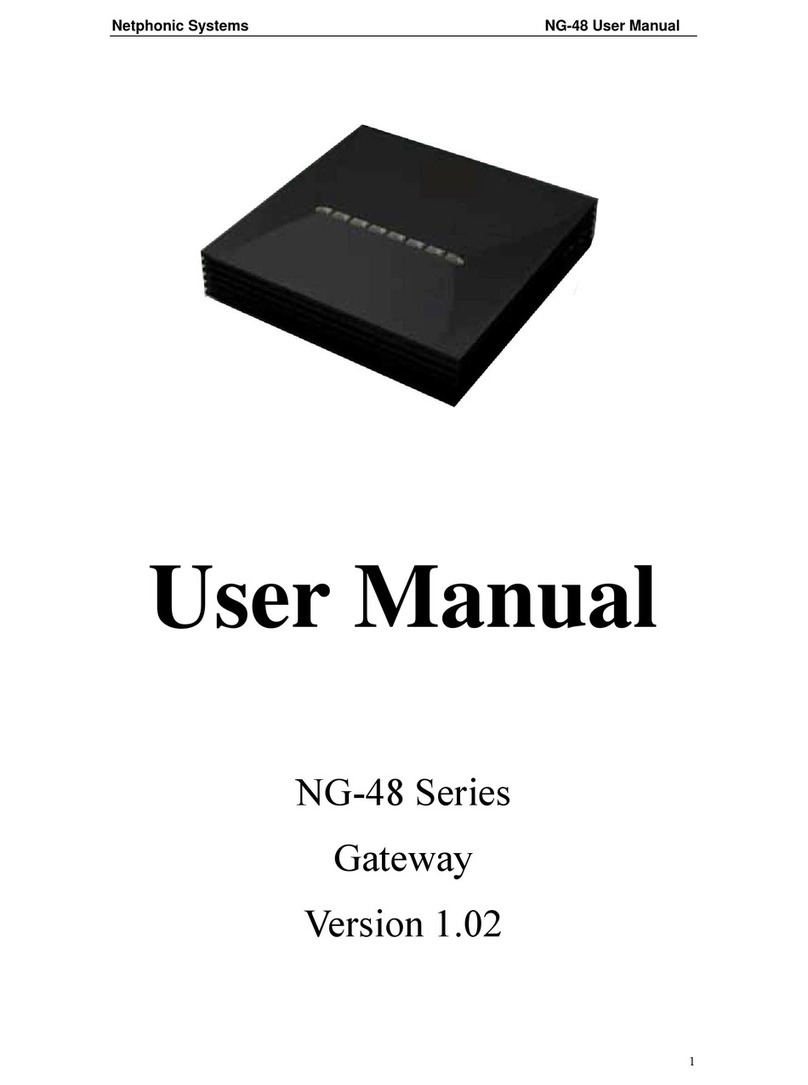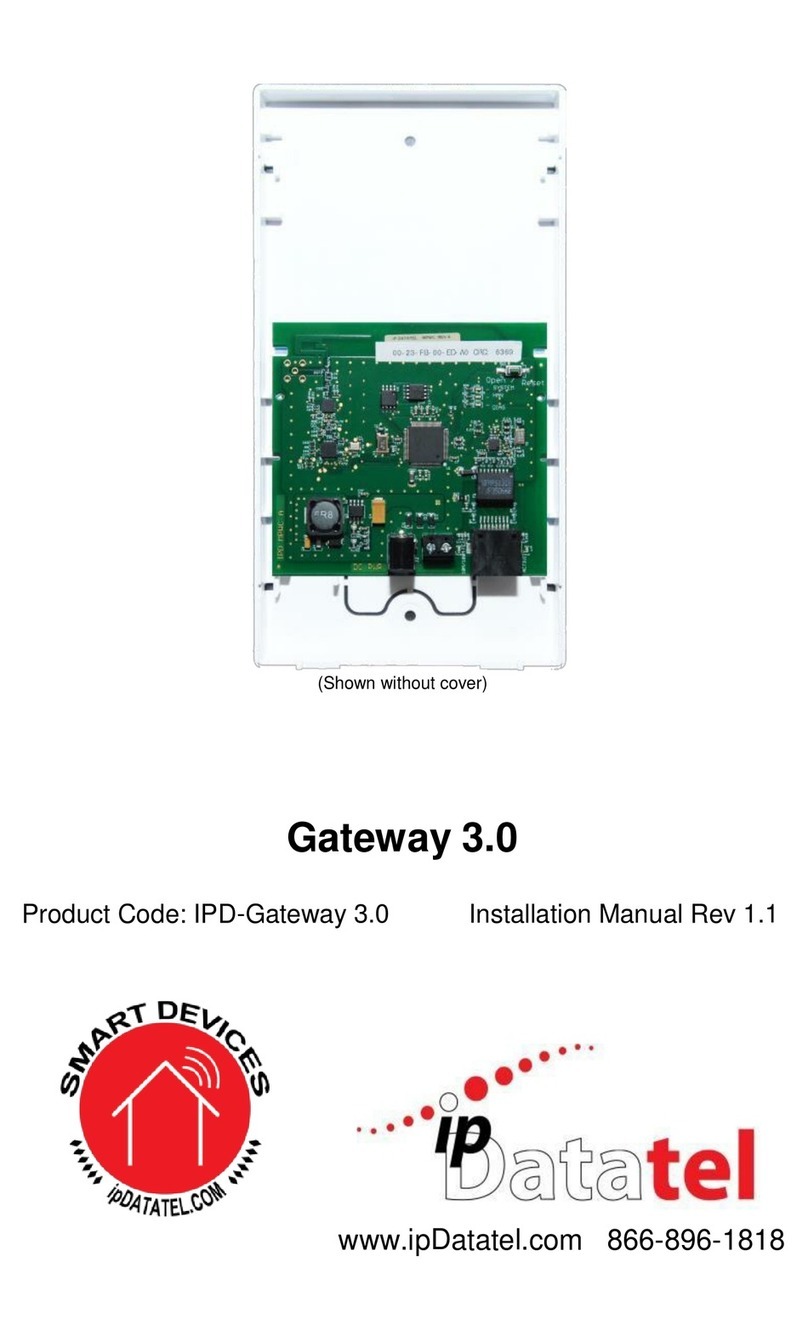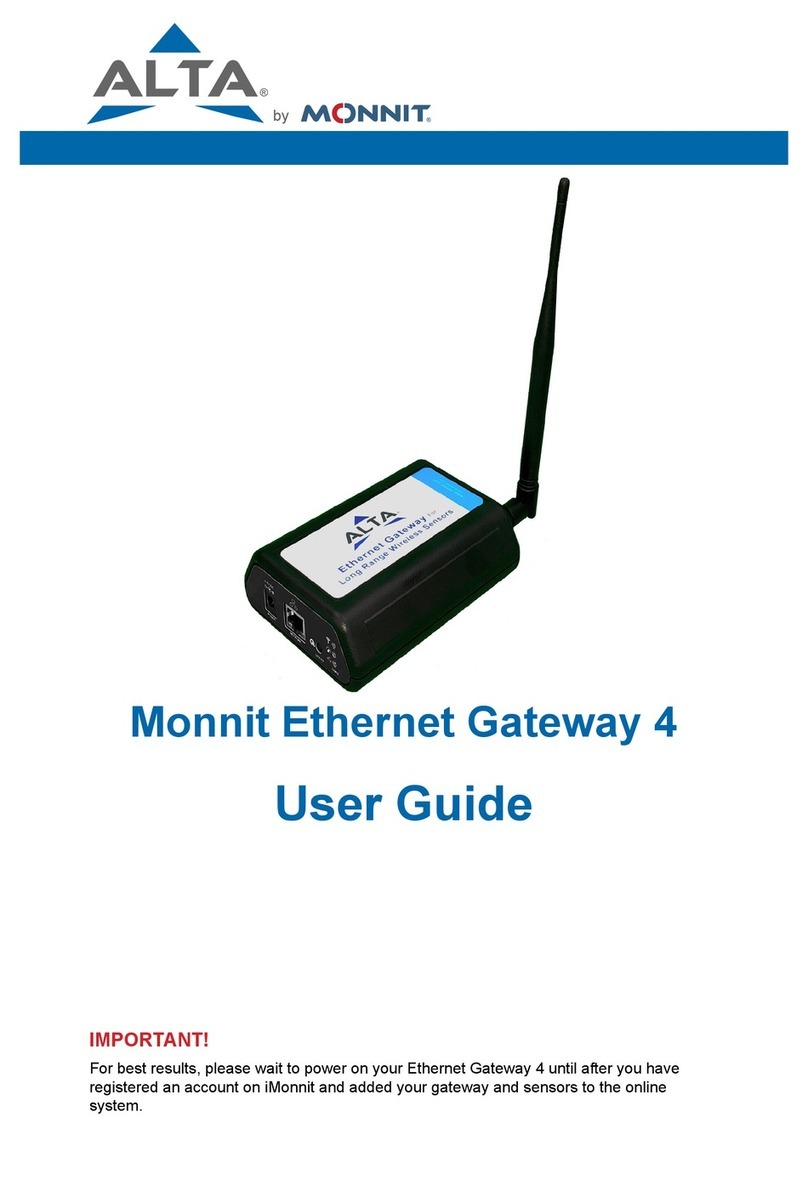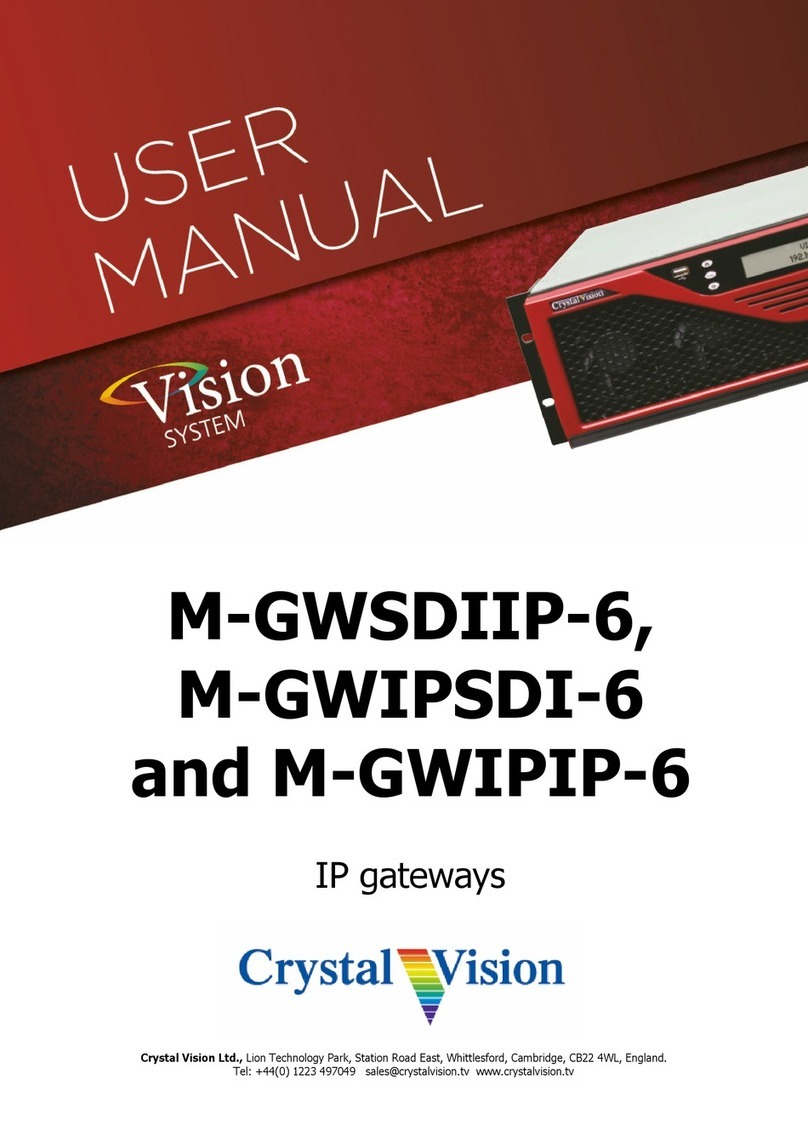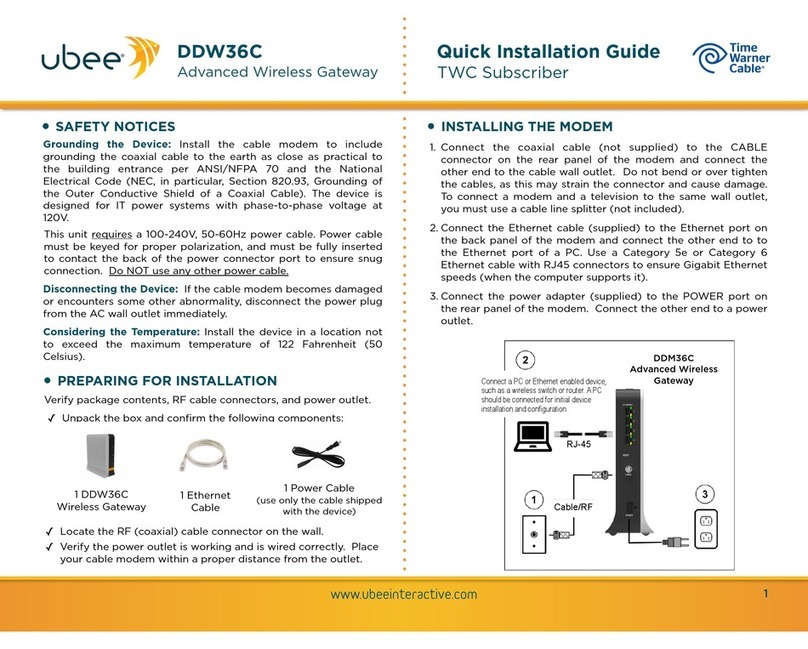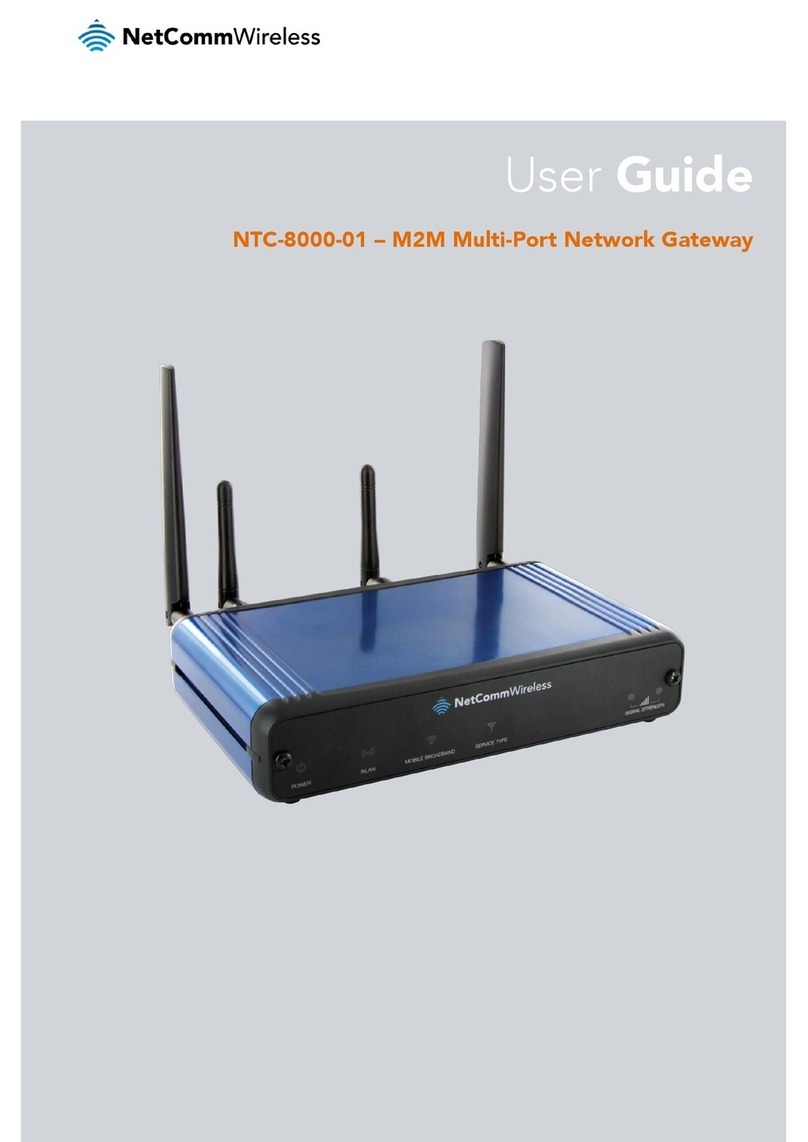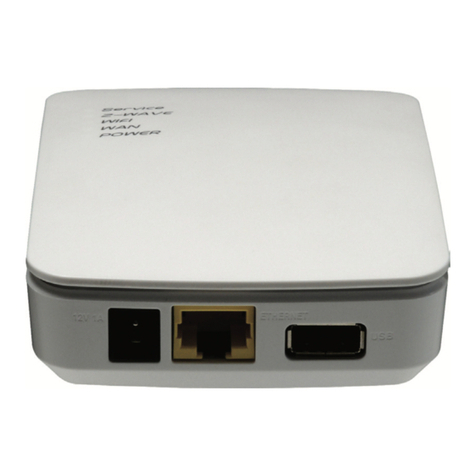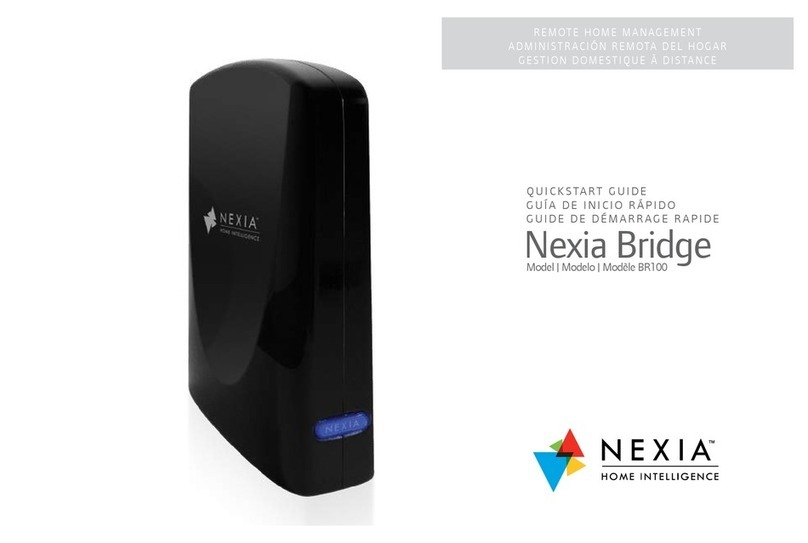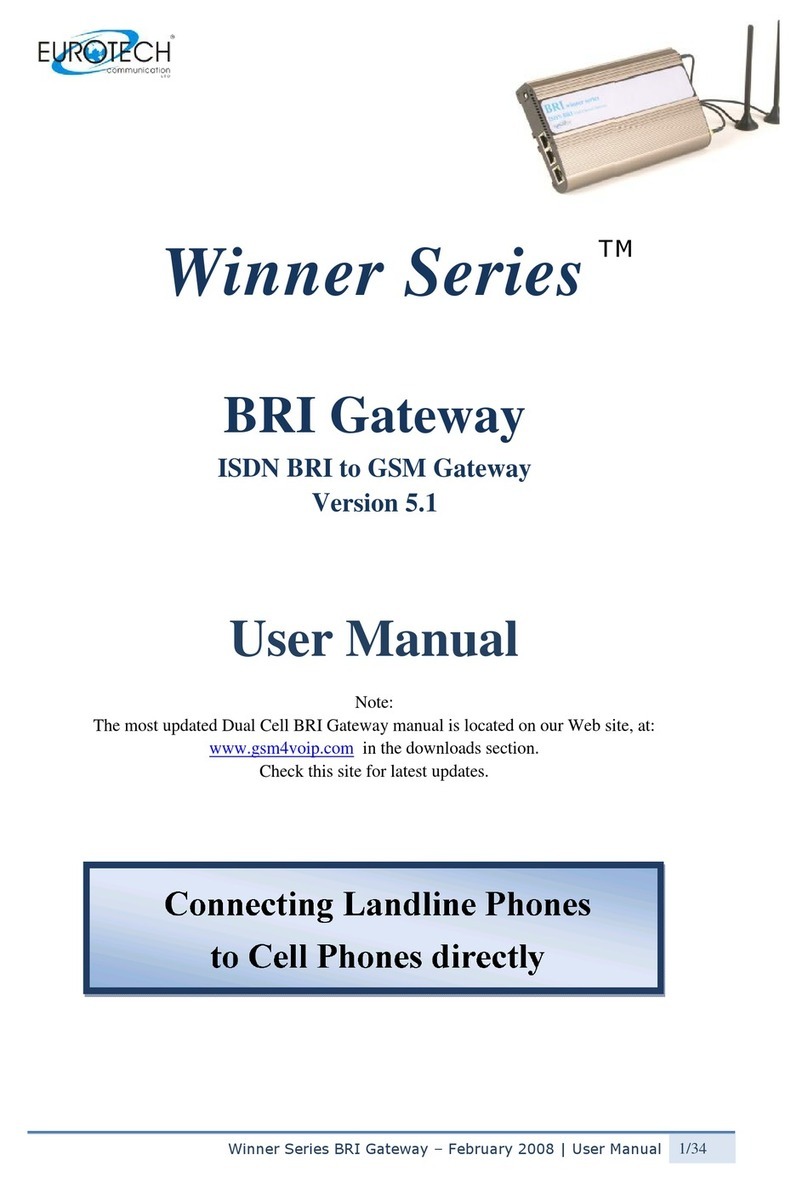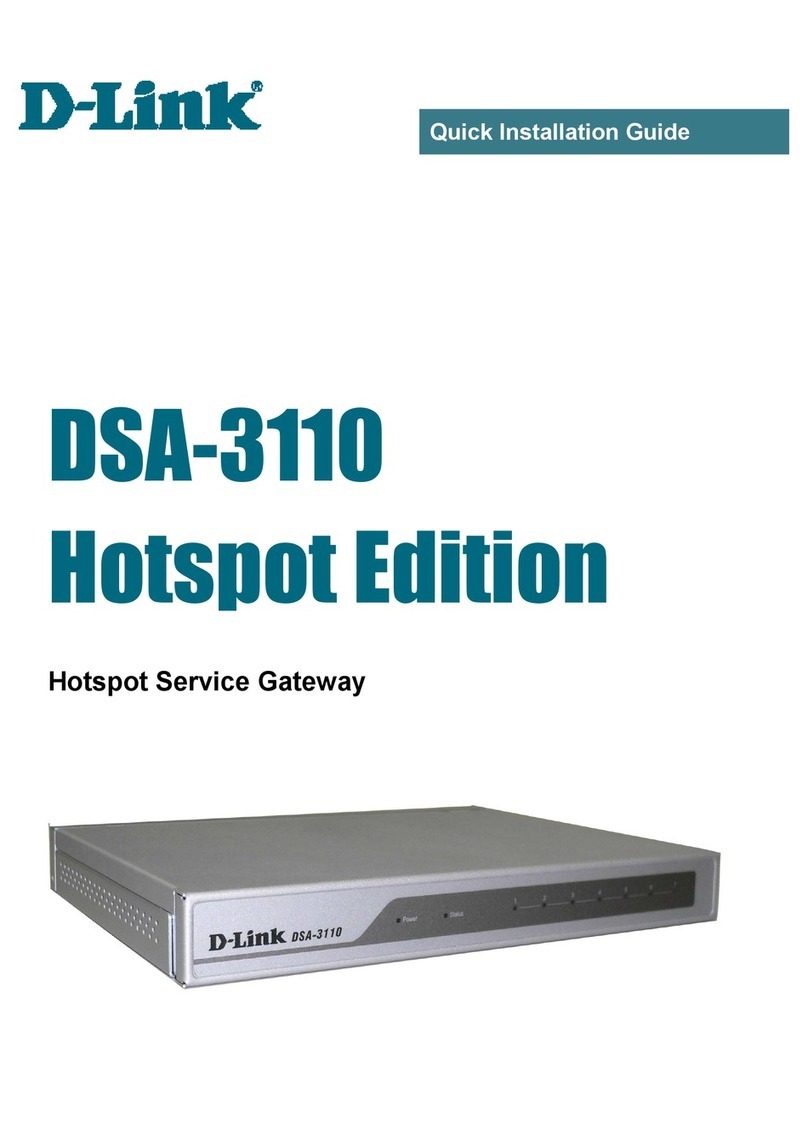Netphonic NG-188 User manual

NG-188 User Manual
NG-188 User Manual
1 / 46

NG-188 User Manual
1NG-188 Features..................................................................................................4
1.1 Appearance.................................................................................................................4
1.2 Interface.......................................................................................................................4
1.3 Electricity characteristic.............................................................................................4
1.4 Software.......................................................................................................................5
1.5 Standard and Protocols.............................................................................................5
1.6 Compliant Standards..................................................................................................6
1.7 Operating requirement...............................................................................................6
1.8 Package.......................................................................................................................6
1.9 Installation....................................................................................................................7
2Web Configuration ...............................................................................................8
2.1 Access Web setting page..........................................................................................8
2.2 Current state................................................................................................................9
2.3 Network......................................................................................................................10
2.3.1 Wan Config......................................................................................... 10
2.3.2 LAN Config......................................................................................... 11
2.4 VoIP ............................................................................................................................12
2.4.1 SIP Config................................................................................................ 12
2.4.2 Iax2 Config............................................................................................... 13
2.5 Advance.....................................................................................................................15
2.5.1 DHCP Server...................................................................................... 15
2.5.2 NAT .................................................................................................... 16
2.5.3 Net Service......................................................................................... 17
2.5.4 Firewall settings.................................................................................. 18
2.5.5 QoS settings....................................................................................... 20
2.5.6 Advance SIP settings ......................................................................... 22
2.5.7 Digital Map.......................................................................................... 24
2.5.8 Call Service Settings .......................................................................... 25
2.5.9 MMI Filter ........................................................................................... 27
2.5.10 Audio Settings .................................................................................... 28
2 / 46

NG-188 User Manual
2.5.11 VPN .................................................................................................... 28
2.6 Dial-Peer Settings .......................................................................................................30
2.7 Config Manage..........................................................................................................31
2.8 Update........................................................................................................................32
2.9 System Manage........................................................................................................35
2.9.1 Account Manage................................................................................. 35
2.9.2 Phone Book:....................................................................................... 35
2.9.3 Syslog Config:.......................................................................................... 35
2.9.4 Time Set:.................................................................................................. 36
2.9.3 Reboot:............................................................................................... 36
3Use normal phone to pre-configure NG-188 gateway..................................37
4Telnet Console....................................................................................................38
4.1 Introduce....................................................................................................................38
4.2 Global Command......................................................................................................39
5Tree Structure.....................................................................................................40
6Network Diagnosis.............................................................................................41
7Restore to factory default..................................................................................41
8POST Mode(safe mode)...................................................................................42
9FAQ.......................................................................................................................43
How many SIP servers may NG-188 register simultaneously?.....................................43
How can I know the NG-188’s IP address?......................................................................43
How to use NG-188’s Lifeline function?............................................................................43
Why the settings vanish after reboot?...............................................................................43
How to use the dial rule?.....................................................................................................43
How to use speed dial function?........................................................................................45
How to configure digital map?............................................................................................45
How to use Call Forward, Call Transfer and 3-way Conference calls?........................45
3 / 46

NG-188 User Manual
1 NG-188 Features
1.1 Appearance
Power: Power indicator.
Server: Server indicator. Registered: ON; Registering: Blinking; Do not register: OFF.
VoIP: Indicate the calling status. Hook-on: OFF; Hook-off and in VoIP state: ON; Hook-off
and in PSTN state: OFF
1.2 Interface
Power: Output Power:12VDC,500mA.
Port: RJ11 port. Connect to handset or the Lifeline accessory.
WAN: RJ45 port.
LAN: RJ45 port. Lifeline accessory
1.3 Electricity characteristic
zSpeciality of electric: output the 12V 500mA DC
4 / 46

NG-188 User Manual
zThe network connects:2 RJ45 connect, a WAN, a LAN
zOne Liftline
1.4 Software
zSupport two sip servers running at the same time.
zBack-up sip server support.
zNAT, Firewall.
zDHCP client and server.
zSupport PPPoE, (used for ADSL, cable modem connecting).
zSupport major G7.xxx CODEC.
zVAD,CNG.
zG.168 compliant 32ms echo cancellation
zTone generation and Local DTMF re-generation according with ITU-T
zE.164 dial plan and customized dial rules
zSupport Lifeline.
zHotline.
zSpeed Dial
zCall Forward, Call Transfer, 3-way conference calls
zCaller ID display
zDND(Do Not Disturb),Black List,Limit List
zUpgrade firmware through FTP or HTTP.
zWeb management.
zReverse polarity
zTelnet remote management.
zVoice prompt
zadjustable user password and super password
1.5 Standard and Protocols
zIEEE 802.3 /802.3 u 10 Base T / 100Base TX
zPPPoE: PPP Protocol over Ethernet
zDHCP Client and Server: Dynamic Host Configuration Protocol
zG.711 u/a; G729 audio Codec
zSIP RFC3261, RFC 2543
zIAX2
zTCP/IP: Internet transfer and control protocol
5 / 46

NG-188 User Manual
zRTP: Real-time Transport Protocol
zRTCP: Real-time Control Protocol
zVAD/CNG save bandwidth
zTelnet: Internet's remote login protocol
zDNS: Domain Name Server
zTFTP: Trivial File Transfer Protocol
zHTTP: Hyper Text Transfer protocol
zFTP: File Transfer protocol
zRFC 3362:T.38 protocol
1.6 Compliant Standards
●CE: EN55022, EN55044
●FCC part 15
●RoHS
1.7 Operating requirement
●Operation temperature: 0 to 40° C (32° to 104° F)
●Storage temperature: -30° to 65° C (-22° to 149° F)
●Humidity: 10 to 90% no dew
1.8 Package
zSize 128 x 85 x 30 mm
zPacking List
9NG-188 gateway
9Power adaptor (12v, 500mA)
9Manual CD
9Lifeline accessory (option)
6 / 46

NG-188 User Manual
1.9 Installation
Use Ethernet cable to connect NG-188’s LAN port and your computer. Set your
computer’s ip to the network 192.168.10.x or using dynamic obtain IP. Open your web
browser and key in 192.168.10.1. Then you will see the logon page of NG-188, the default
username and password is admin/admin for administrator and guest/guest for guest.
Set up page for VoIP use only:
Set up page for Lifeline support:
Port illustration:
7 / 46

NG-188 User Manual
2 Web Configuration
2.1 Access Web setting page
Enter NG-188 IP address in the web browser and press ENTER to go to the log on page,
and key in the username and password to access NG-188 setting page.
Default username and password is:
Administrator: Username: admin password: admin
User: Username: guest Username: guest
8 / 46

NG-188 User Manual
2.2 Current state
This page shows NG-188’s running state.
Network :shows the WAN and LAN port connecting state and current settings.
VoIP:show the default protocol, the working state of SIP and IAX2, you can see whether
NG-188 has registered the public sip server and IAX2 server.
Phone Number shows the public sip server、the private sip server and the IAX2 server
phone numbers.
9 / 46

NG-188 User Manual
2.3 Network
2.3.1Wan Config
WAN port network setting page.
Support static IP, dynamic obtain IP and PPPoE.
Configure Static IP:
----Enable Static;
----Set NG-188’s IP address in the IPAddress;
----Set net mask in the Net mask field;
----Set router IP address in the Gateway;
----DNS Domain:
----Set local DNS server in the Preferred DNS and the Alternate DNS
Configure to dynamic obtain IP
----Enable DHCP;
If there is DHCP server in your local network, NG-188 will automatically obtain WAN
port network information from your DHCP server.
Configure PPPoE:
----Enable PPPoE
----PPPoE server: Enter “ANY” if no specified from your ITSP.
----Enter PPPoE username and pin in the username and password.
NG-188 will automatically obtain WAN port network information from your ITSP if
PPPoE setting and the setup are correct.
Notice: If user accesses the gateway through WAN port. He should use the new IP
address to access the gateway when the WAN port address was changed.
10 / 46

NG-188 User Manual
2.3.2 LAN Config
Bridge Mode: Enable this option to switch to bridge mode. Gateway won’t assign IP
for its LAN port in bridge mode and its LAN and WAN port will be in the same network.
(This setting won’t take effect unless you save the config and reboot the device)
IP Netmask: Set the IP and Netmask for the LAN
DHCP Server: Enable DHCP service in LAN port
NAT: Enable NAT.
11 / 46

NG-188 User Manual
2.4 VoIP
2.4.1 SIP Config
Setting page of public SIP server:
Register Server Addr: Register address of public SIP server
Register Server Port: Register port of public SIP server
Register Username: Username of your SIP account (Always the same as the phone
number)
Register Password: Password of your SIP account.
Proxy Server Addr: IP address of proxy SIP server (SIP provider always use the
same IP for register server and proxy server, in this case you don’t need to configure the
proxy server information. )
Proxy Server Port: Signal port of SIP proxy
Proxy Username: proxy server username
Proxy Password: proxy server password
Domain Realm: SIP domain, enter the sip domain if any, otherwise NG-188 will
use the proxy server address as sip domain.
Local SIP port: Local SIP register port, default 5060
Phone Number: Phone number of your SIP account
Register Expire Time: register expire time, default is 600 seconds. NG-188 will auto
12 / 46

NG-188 User Manual
configure this expire time to the server recommended setting if it is different from the SIP
server.
Detect Interval Time:Co-work with the Auto Detect Server, if Auto Detect Server is
enable, NG-188 will periodically detect if the SIP server is available according this setting.
RFC Protocol Edition: Current NG-188 SIP versions. Set to RFC 2543 if the gate
need to communicate to devices (such as CISCO5300) using the SIP 1.0. Default is RFC
3261.
Enable Register: Enable/Disable SIP register. NG-188 won’t sent register info to SIP
server
DTMF Mode:DTMF signal sending mode: support RFC2833, DTMF_RELAY (inband
audio) and SIP info
Auto Detect server: co-work with Server Auto Swap and Detect Interval Time. Enable
this option, NG-188 will periodically detect whether the public SIP server is available, if the
server is unavailable, the NG-188 will switch to the back-up SIP sever, and continue
detecting the public sip server. NG-188 will switch back to the primary SIP server if the
server is available again.
Server Auto Swap:Please refer to Auto Detect server for detail.
Enable Via rport: config the supporting for RFC 3581
SIP(Default Protocol): Setting for the default protocol of SIP
2.4.2 Iax2 Config
Setting page of public IAX server:
IAX Server Addr: Register address of public IAX server
13 / 46

NG-188 User Manual
IAX Server Port: Register port of public IAX server,default port is 4569
Account Name: Username of your SIP account (Always the same as the phone
number)
Account Password:Password of your IAX account.
Local port: Signal port of local, default port is 4569
Phone Number: Phone number of your IAX account
Voice mail number: If the IAX support voice mail, but your username of the voice mail is
letters which you can not input with the ATA , then you use the number to stand for your
username
Voice mail text: if IAX support voice mail, config the domain name of your mail box here.
Echo test number: If the platform support echo test , and the number is test form , the
config the test number to replace the text format The echo test is to test the woring status
of terminals and platform
Echo test text: echo test number in text format
Refresh time: IAX refresh time
Enable Register: enable or disable register
IAX(Default Protocol): Set IAX 2 as the default protocol , if not the system will choose SIP
as default
Enable G.729: Using G.729 speech coding mandatory consultations
14 / 46

NG-188 User Manual
2.5 Advance
2.5.1 DHCP Server
DHCP server manage page.
User may trace and modify DHCP server information in this page.
Update Mode: Using DHCP updated model ,None expressed are not updated,
Update firmware update firmware is used to DHCP. Update file is used to
configure DHCP updated configuration files.
Tftp Server: Addresses using TFTP server upgrade 。
DNS Relay: enable DNS relay function.
User may use below setting to add a new lease table.
Lease Table Name: Lease table name.
Lease Time: DHCP server lease time.
Start IP: Start IP of lease table.
End IP: End IP of lease table. Network device connecting to the NG-188 LAN port can
dynamic obtain the IP in the range between start IP and end IP.
Netmask: Netmask of lease table.
Gateway: Default gateway of lease table
DNS: default DNS server of lease table.
Notice: This setting won’t take effect unless you save the config and reboot the device
15 / 46

NG-188 User Manual
2.5.2 NAT
Advance NAT setting. Maximum 10 items for TCP and UDP port mapping.
IPSec ALG: Enable/Disable IPSec ALG;
FTP ALG: Enable/Disable FTPALG;
PPTP ALG: Enable/Disable PPTPALG;
Transfer Type: Transfer type using port mapping.
Inside IP: LAN device IP for port mapping.
Inside Port: LAN device port for port mapping.
Outside Port: WAN port for port mapping.
Click Add to add new port mapping item and Delete to delete current port mapping item.
16 / 46

NG-188 User Manual
2.5.3 Net Service
HTTP Port: configure HTTP transfer port, default is 80.User may change this port to enhance
system’s security. When this port is changed, please use http://xxx.xxx.xxx.xxx:xxxx/ to
reconnect.
Telnet Port: configure telnet transfer port, default is 23.
RTP Initial Port: RTP initial port.
RTP Port Quantity: Maximum RTP port quantity, default is 200
Notice:
Settings in this page won’t take effect unless save and reboot the device.
If you need to change telnet port or HTTP port, please use the port greater than 1024,
because ports under 1024 is system remain ports.
HTTP service if HTTP is set to 0.
17 / 46

NG-188 User Manual
2.5.4 Firewall settings
Firewall setting page. User may set up firewall to prevent unauthorized Internet users from
accessing private networks connected to the Internet (input rule), or prevent
unauthorized private network devices to access the internet.
Access list support two type limits: input_access limit or output_access limit. Each type
support 10 items maximum.
NG-188 firewall filter is base WAN port. So the source address or input destination
address should be WAN port IP address.
Configuration:
in_access enable enable in_access rule
out_access enable enable out_access rule
Input/Output: specify current adding rule is input rule or output rule.
Deny/Permit: specify current adding rule is deny rule or permit rule.
Protocol Type: protocol using in this rule: TCP/IP/ICMP/UDP.
Port Range: port range if this rule
Src Addr: source address. can be single IP address or network address.
Dest Addr: destination address.can be IP address or network address.
Src Mask: source address mask. Indicate the source is dedicate IP if set to
255.255.255.255. Otherwise is network ID
18 / 46

NG-188 User Manual
Des Mask: Destination address mask. Indicate the source is dedicate IP if set to
255.255.255.255. Otherwise is network ID
19 / 46

NG-188 User Manual
2.5.5 QoS settings
AT-530 IP phone implement QoS based on 802.1p, The QoS is used to mark the network
communication priority in the data link/MAC sub-layer. AT-530 will sorted the packets
using the QoS and sends it to the destination.
VLAN Enable: If enable the VLAN service, the second layer will realize separate voice,
signal and data transmission. To realize separate voice and data transmission by dispose
for IP precedence of ToS area of voice transmission. To reach upper layer switch or router
have priority to transfer voice transmission. (The prerequisite is the upper layer switch or
routers have to identify ToS area.)
VLAN ID: Dispose VLAN ID is add a Tag header after realize enable the VLAN function.
The realized voice packets transfer at the same VLAN. The prerequisite is it must the
same as VLAN of upper switch. The value range are 1~4094.
DiffServ Enable: If enable the VLAN service, it indicates use DSCP mode to realize three
layers QoS. This moment, the DSCP of SIP signals which between IP Phone and MGC. It
will use Class Selector 5 (The value is 0xA0). And the DSCP of mediums information (In
RTP packets) would be used the values of DiffServ Value field.
DiffServ Value:The value range:
0x28,0x30,0x38,0x48,0x50,0x58,0x68,0x70,0x78,0x88,0x90,0x98,0xb8.default is
0xb8 ,oxb8 stands for best fast transmission; 28-30 is guarantee for the transmission
priority for the 1st rank , 48-58 is guarantee for the transmission priority for the 2nd rank,
68-78 is guarantee for the transmission priority for the 3rd rank, 88-98 is guarantee for the
transmission priority for the 4th rank.
802.1P Priority: the priority of 802.ip
20 / 46
Table of contents
Other Netphonic Gateway manuals
Popular Gateway manuals by other brands
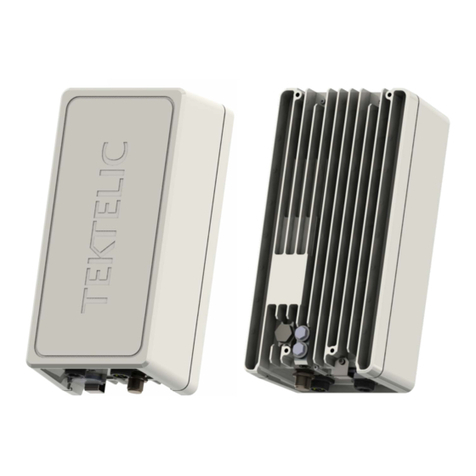
TEKTELIC Communications
TEKTELIC Communications Kona Micro Gateway user guide
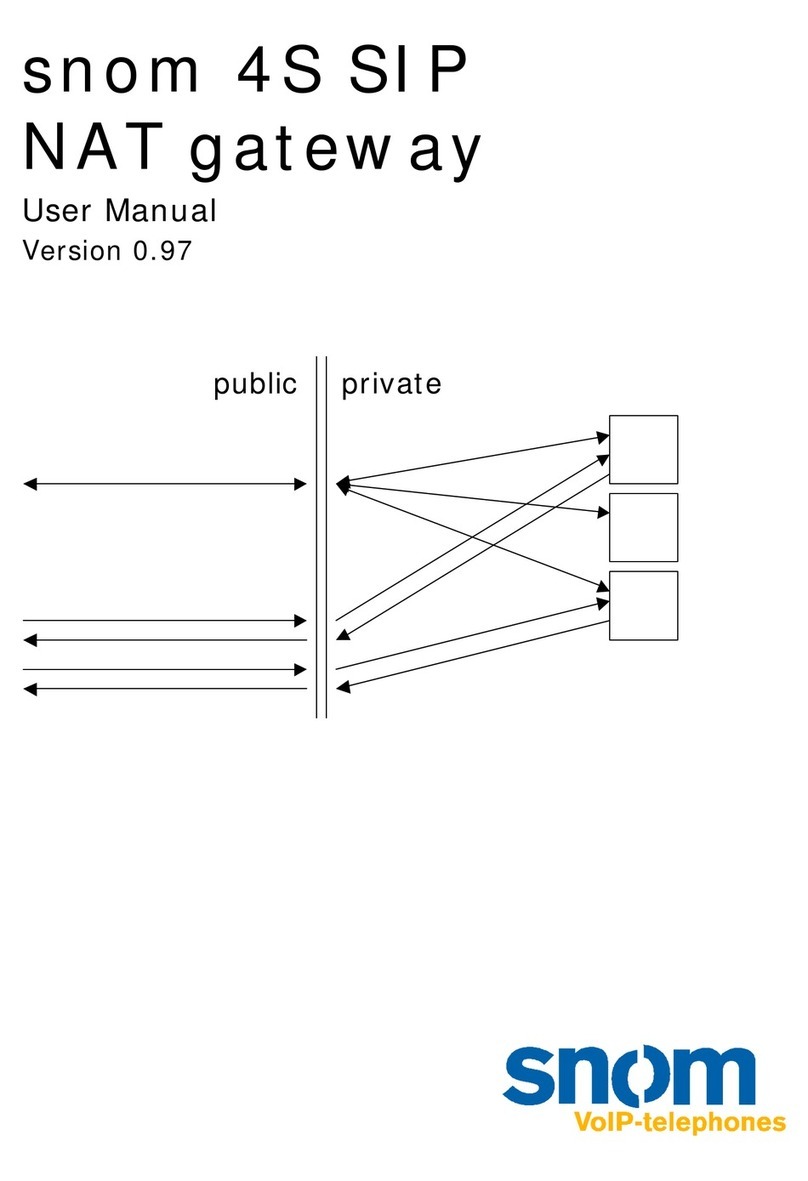
Snom
Snom 4S SIP NAT gateway user manual
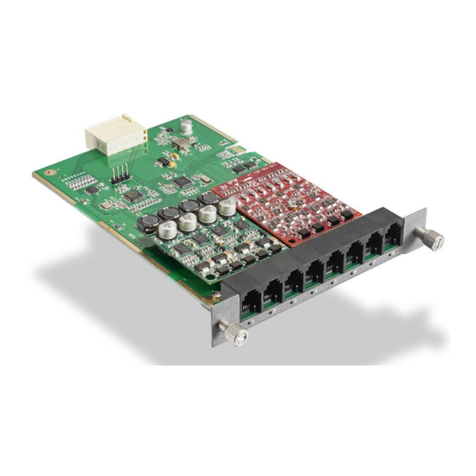
OpenVox
OpenVox VS-GW1600 series user manual

ZyXEL Communications
ZyXEL Communications ZyXEL ZyWALL 10W user guide
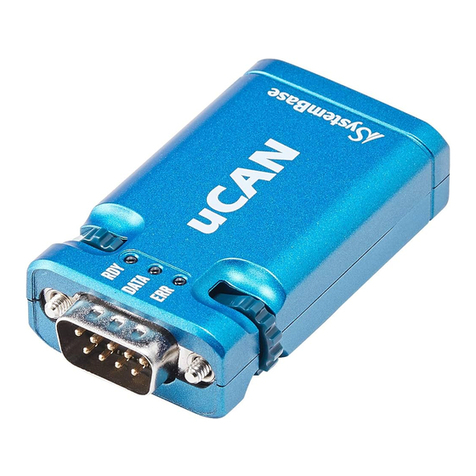
SystemBase
SystemBase eCAN user manual
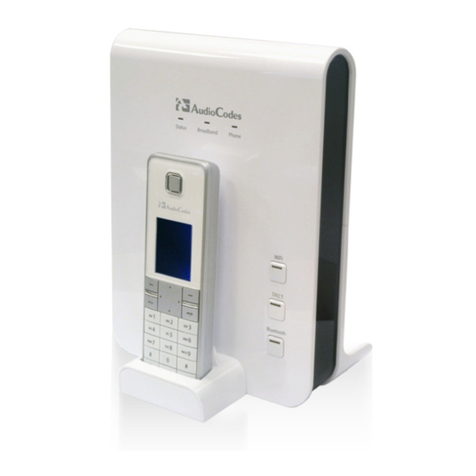
AudioCodes
AudioCodes MP-26 series user manual
